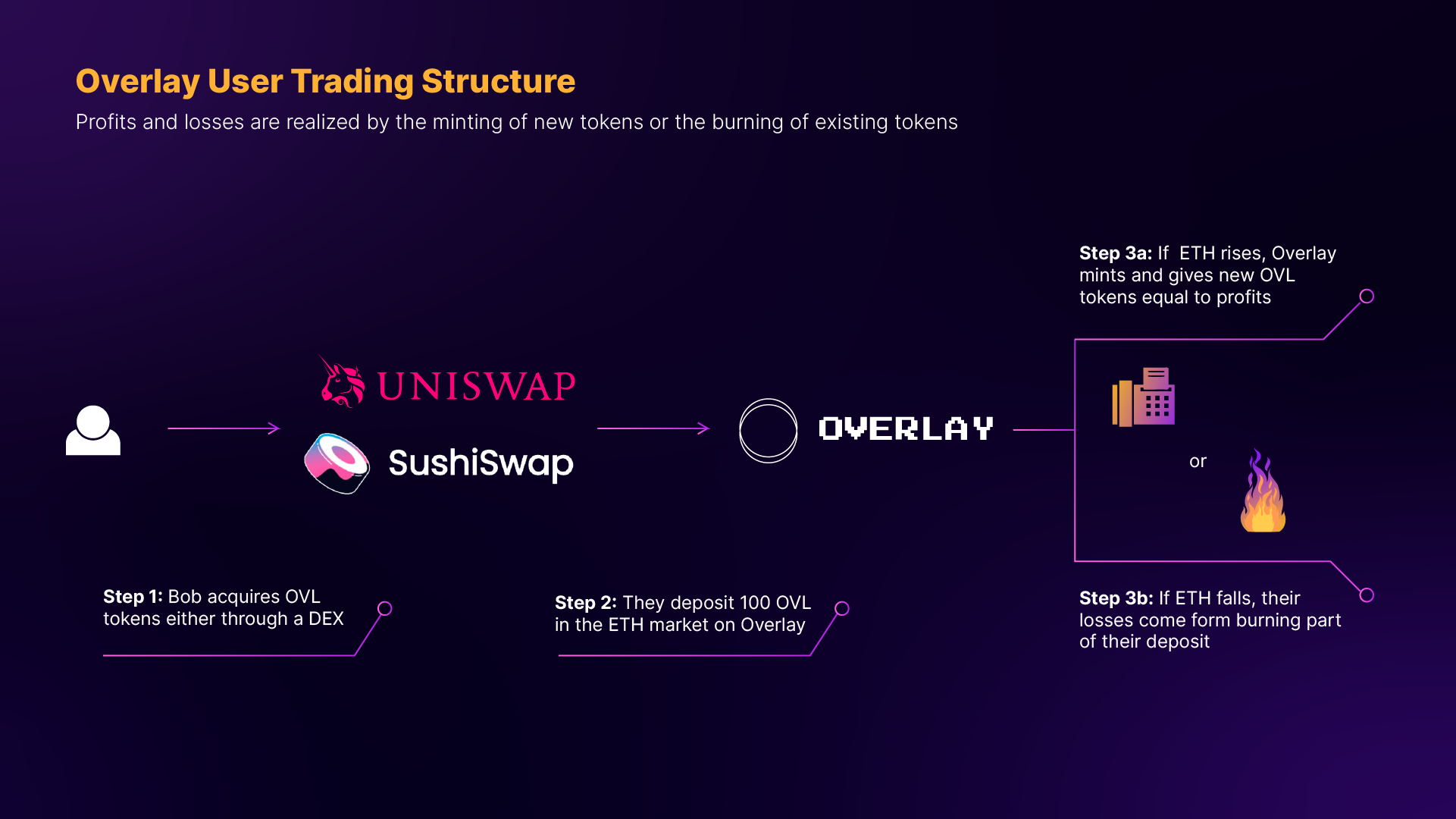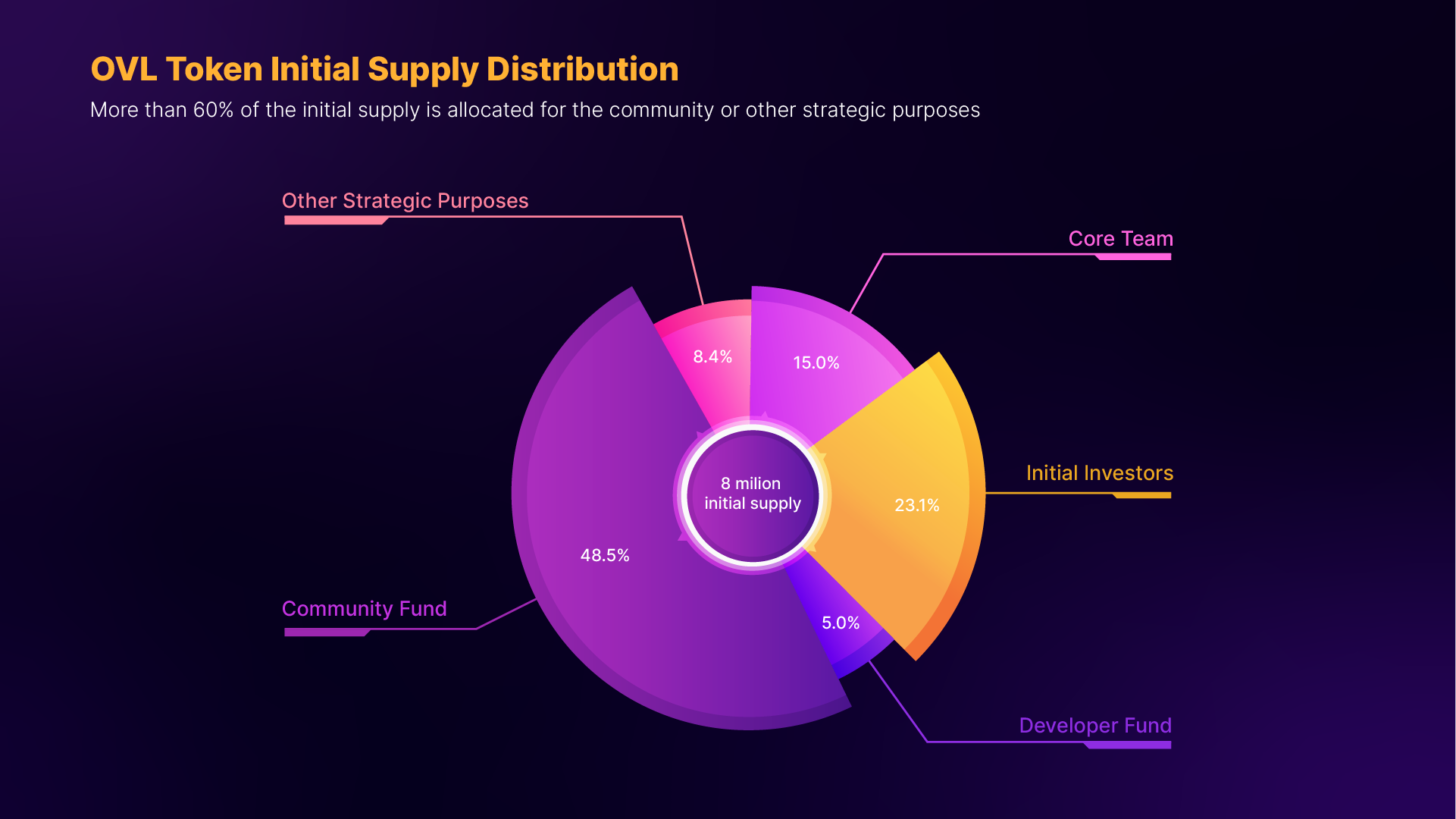Overlay a new Defi protocol launched last week, with a new long-short mechanism that is expected to change the old way of trading. Let's find out and evaluate the potential of Overlay with Holdstation.

Overlay Protocol Overview
What is Overlay Protocol?
Overlay protocol is a liquidity layer for illiquid assets, solving the liquidity problem for legacy trading methods.
Understandably, Overlay allows traders (buy/sell) futures contracts without the need for counterparties (sell/buy). This allows users to trade any type of asset, including those with little or no liquidity.
mechanism
To use the user must have the $OVL token through DEXs like Uniswap or Sushiswap.
Use the futures contract in the Overlay as follows:
- Overlay will create a copy of the futures contract (e.g. ETH futures copy)
- Users open positions (buy or sell) and lock $OVL, users do not trade with others but trade directly with the Overlay protocol.
- If the user wins, the user will get back the original $OVL which the protocol will mint additional $OVL for the user as interest.
- If the user loses, the user will be burned by the protocol for the amount of $OVL proportional to the percentage of the loss.

Example: Suppose someone chooses to buy ETH. Buyer will deposit 100 Tokens $OVL to buy the transaction. If ETH doubles in price, the Overlay protocol generates 100 new $OVL Tokens for the trader, who then closes the position and receives a total of 200 $OVL. Conversely, if the ETH price halves, the trader will close the position with 50 $OVL and the 50 $OVL loss will be burned by the protocol.
Users can also use leverage to go short with this protocol.
Fear of $OVL token inflation and how to prevent it
Transacting directly with the protocol causes inflation concerns for users, as Overlay continuously pumping and burning $OVL can cause over-pumping or over-burning.
Therefore, Overlay has introduced insurance measures to avoid inflation:
- Fee: Overlay changes the bet fee from 0.075 - 0.5% as needed.
- Interest limit on position: User will have only one maximum interest rate (Ex: Bet 100 $OVL - Win x2 -> withdraw 200 $OVL - Win x10 -> only withdraw up to 500 $OVL) .
- Funding payment: Similar to Funding Rate, the longer a user holds a position, the more fees the user has to pay to the party with a lower long/short ratio.
Tokenomic
- Ticker: $OVL
- Blockchain: Ethereum
- Contract: 0x70043EA71f2f4d5e624eab2cef45aeD864B3B7Cf
- Token standard: ERC-20
- Token Type: Utility
- Max Supply: 10.000.000 OVL
- Initial supply: 8.000.000 OVL
Allocation

Backer
The Overlay protocol is backed by Parafi capital, 1KX and Polychain.
Protocol review
Advantages:
- Solve the problem of liquidity, users trade directly with the protocol without having to wait for order matching when someone trades against them.
- Overlay's protocol allows users to trade with all types of assets by creating copies of contracts traded on the market.
Defect:
- The possibility of inflation and price slippage.
- The new token has not been verified.
Conclusion
At first, the Overlay Protocol can be seen as a new direction on how to trade smart contracts, solving liquidity problems. However, this is just a "new bottle of old wine" compared to other Defis. Offer a new solution but the possibility in the future will create new problems like inflation or slippage because of constant mint and burn.
The Twitter community or supporters are few, the project is not well-rounded in terms of image building, which lacks the trust of users.
Finally, it's a matter of user habits, users are still used to trading futures on major CEX exchanges like Binance or Huobi, etc. And the fact that users trade directly with the protocol makes the asset secured. for protocol operation may be affected.

